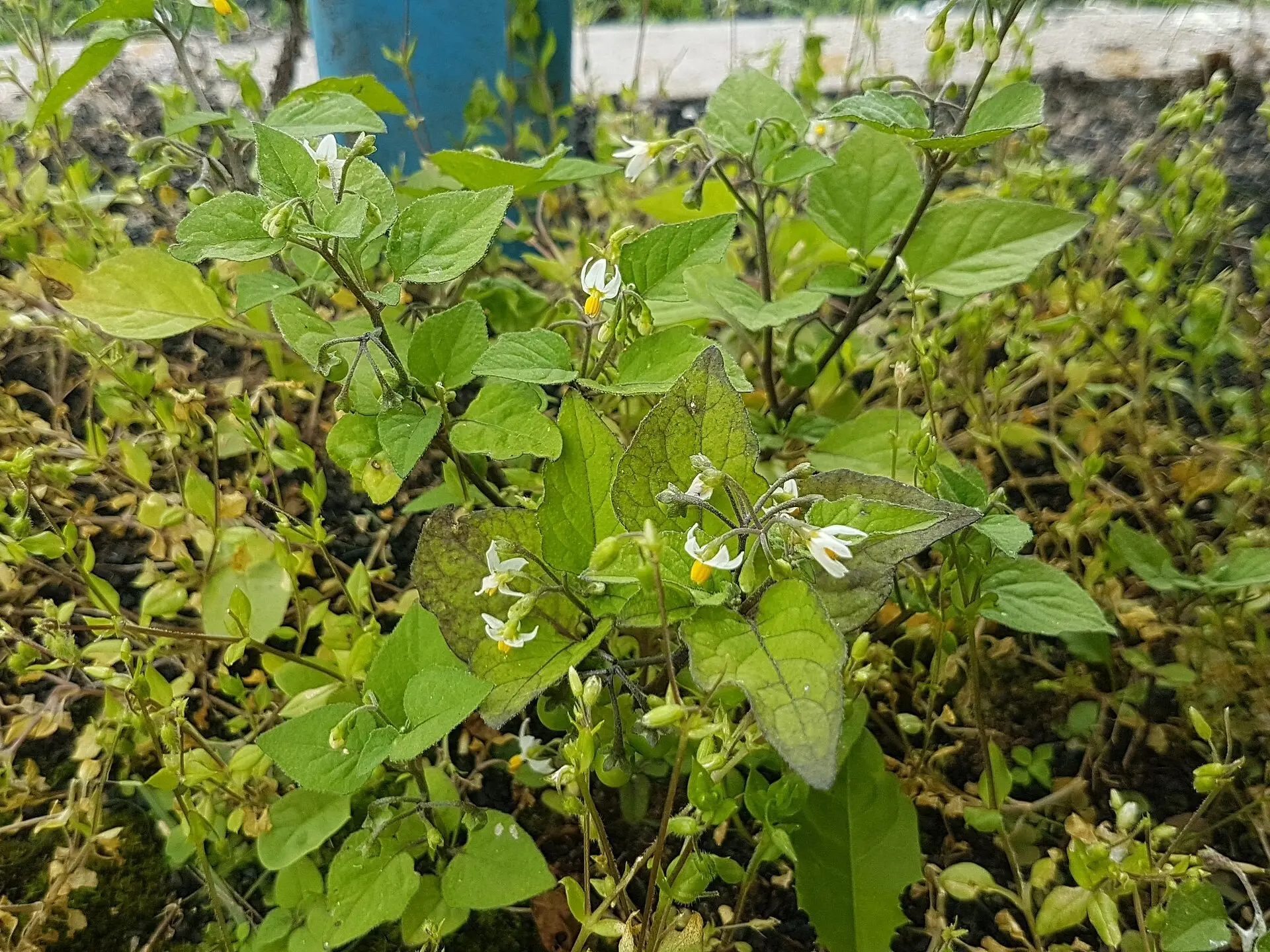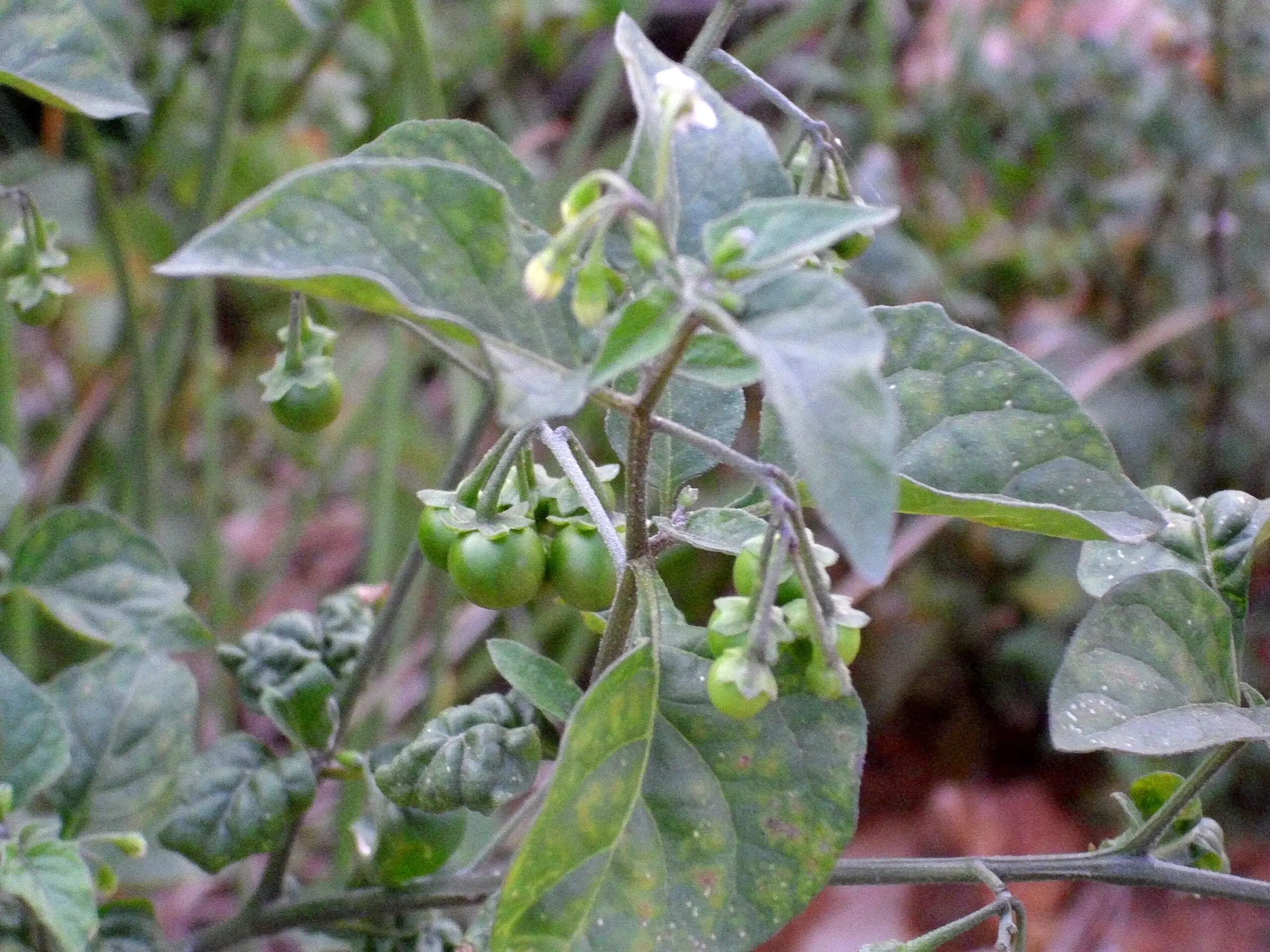
It’s that time of the week again & Monday morning is a good time to learn about another plants your horse can’t eat. Today a close up of the universally deadly but strangely beautiful Black Nightshade
A Little About Black Nightshade
Solanum nigrum is Black Nightshade, an annual with toothed leaves, white/purple flowers that grow in open clusters and fruit that starts green and grows dark purple as it ripens.
How Dangerous Is It?
This is actually a very toxic plant & one that you and any other mammal shouldn’t eat either. Horses should be kept well away from Black Nightshade, or any other color Nightshade for that matter. This species contains a glycoalkaloid which irritates the digestive tract and central nervous system.
Stems, leaves & unripe berries are toxic and can be fatal to equines.

What To Look For
You know your animal the best, so you should know when something is amiss. Black Nightshade toxicity symptoms can include stomach pain, dilation of pupils, diarrhea, weakness and/or loss of coordination, hemorrhagic gastroenteritis, respiratory difficulty, drooling and unconsciousness.
Learn More
Be sure to check out the Black Nightshade page to learn more about the plant and while you are at it why not check out more toxic plants?
*It should be noted that I’m not a veterinarian. This information is written specifically for horses and should be used for reference purposes only. If you think your horse has eaten something toxic call your vet right away.
My horse ate black nightshade, and although he ate only two small-ish plants (smaller than a potato plant in size) was extreemly ill. I found him only a few hours later with chronic toxic laminitus. The vet struggled to remove his shoes as the metal was too hot to handle. Despite voicing my concerns that it was from toxic poisoning, the vet treated him as if he had merely lamitnitus (i.e. no food, box rest etc). Ten days later he started collicing and the vets reaslised his organs were failing. He was rushed to hospital and put on a drip with anti-biotics. After three weeks of it being ‘touch and go’ he was able to come home. During his stay I found the remains of the black nightshade plants in the hedgerow of his field, and despite his bloods showing the poison to be that as from the nightshade family, neither the vets, the yard or other owners there felt it could be down to the plant. Everyone seems to believe horses won’t eat it, and it’s not as toxic as Ragwort. I have done my research though and found that’s not the case. All parts of the plant are highly toxic: roots, stems, leaves and berries. As the plant has hallucinagenic properties, and provides some relief from arthritic conditions, some horses will not be so concerned by the bitter taste. Early signs of poisoning can include slight loss of balance, lethargy and/or lack of allertness. Breathing may also be affected. My horse almost died from it and certainly his kidney’s and liver have been permanantly damaged. I try my best to warn people but it’s brilliant to see other people like yourselves taking this plant seriously. It’s actually far more toxic than ragwort, often difficult to spot (as the plants can be very small) but is deadly.